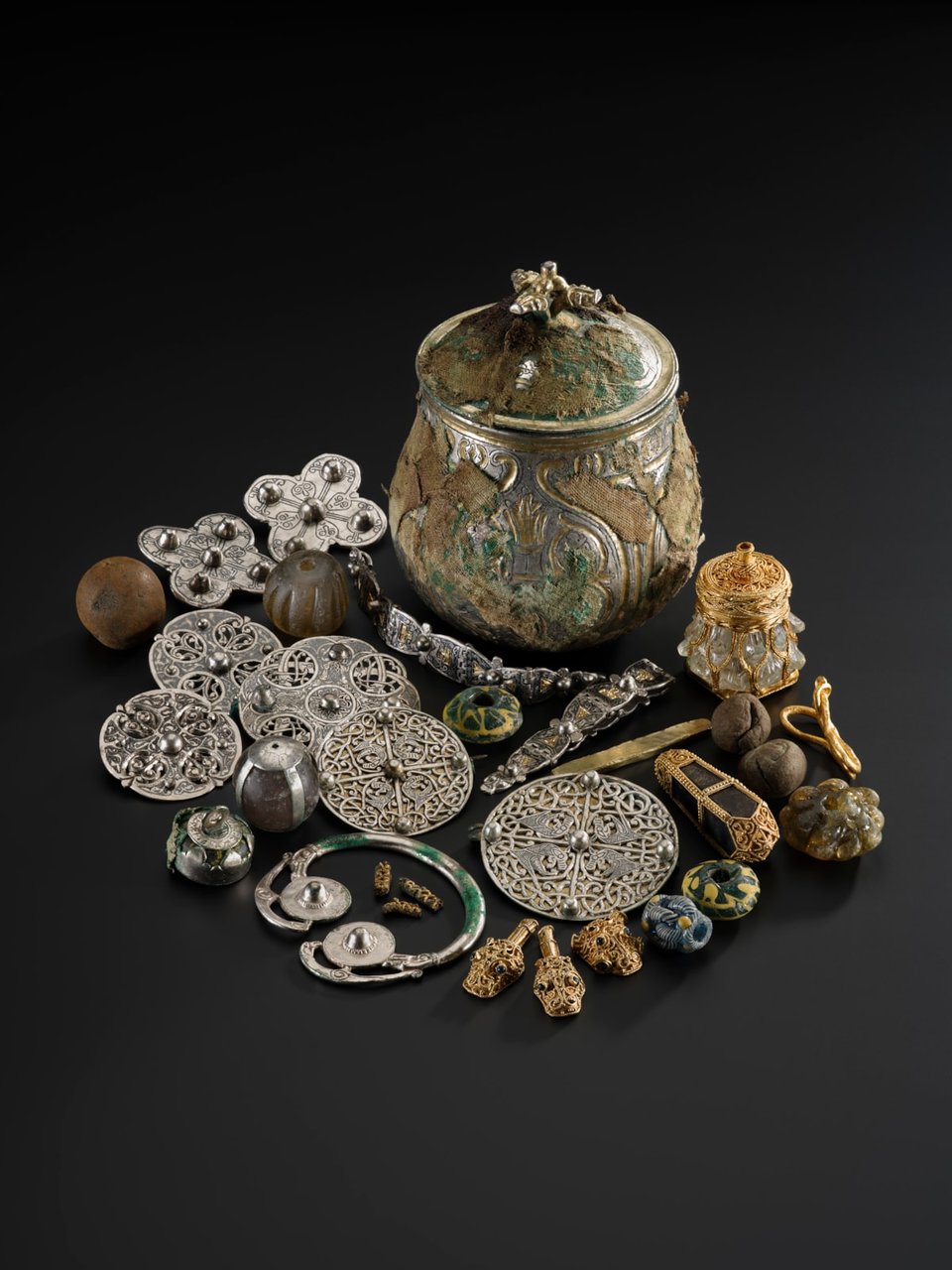Persian Silver in Early Medieval Scotland
A precious silver object from the Early Middle Ages reveals its origins, halfway around the world.

Modern Medieval
by David M. Perry and Matthew Gabriele
While out metal detecting in 2014, an enthusiast stumbled upon a massive trove of precious objects - all dating to ca. 900 CE. The site in Balmaghie, not 30 miles to the west of Ruthwell (and its famous cross), wasn’t on its face exceptional, but the findings clearly were. The so-called “Galloway Hoard” was quickly acquired by the National Museums of Scotland and the work of analysis began.
The jewel of the find was a lidded silver vessel, still covered in some of the original medieval textiles that would have kept it safe for its original owner, and filled with objects of rock crystal, silver, and other precious metals.

Archeologists and other scholars found this vessel particularly curious, as its decoration didn’t match that of the other silver objects contained within. The other items within were “local” - in classic Viking or early medieval English style, with recognizable decorations that would be quite at home in the site where the hoard was found. For example, this cross shaped brooch with early medieval English images:

But now, a press release from the National Museums of Scotland - picked up by, among others, The Guardian - has put to rest a mystery about the lidded vessel: It really wasn’t a local product. The metal was mined and the object created more than 3,000 miles away in the Persian Sasanian Empire (in modern Iran).
This finding is corroborated by the vessel’s decoration. Images of leopards and fire altars, for example, likely depict scenes from Zoroastrianism, a monotheistic religion widespread under the Sasanians (who were defeated by Arab invaders in the 7th century CE).
So the only mystery left now is how did it get to southeastern Scotland?
And that, in some ways, is the easy part. As we discussed in our The Bright Ages, medieval Europe was nothing if not permeable. Vikings, for example, traveled by camel to Baghdad, and it’s very easy to imagine an object like the one noted here being part of a delegation’s gifts brought west either to the Carolingians at Aachen or to Rome (before passing further north).
And this permeability is highlighted in a new exhibition opening soon at the British Museum, entitled “Silk Roads.” Objects - and people - have always moved into and out of Europe, even throughout the so-called “Dark Ages.” Perhaps the most interesting question this new discovery raises then, is not how objects reached their distant destination, but rather how people understood what they were encountering, seeing, touching when they knew those objects came from so very far away.
Add a comment: